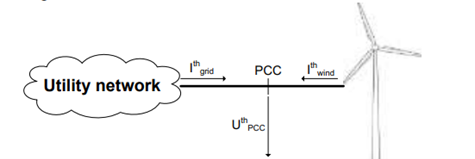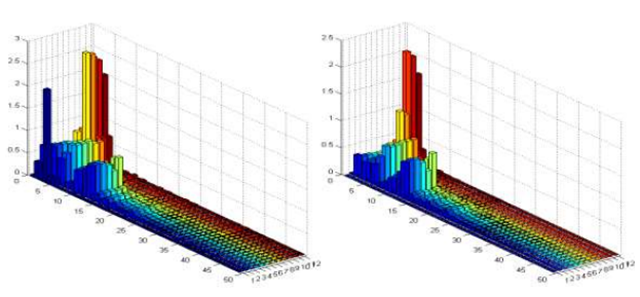According to global energy trends, sources of both low and high order harmonics are increasing continuously, not only in distribution grids but also in transmission levels (wind farms, photovoltaic parks, HVDC links, and FACTS devices). Consequently, all parties involved must know the current situation on the system in order to separate the effect of system harmonic impedance and background distortion from the converter emissions. Grid operators, customers and regulators are carrying out more power quality measurements including harmonics at all voltage levels from low o extra-high voltage.
Measurement of harmonic currents and voltages is a key issue for voltage quality assessment and the compliance verification for generating installations. In several countries, it has become compulsory to submit an official measurement report as part of the grid connection procedure.
Grid power quality measurements will display, among other things, the actual value of the individual harmonic voltages and currents or “background harmonics”. The equivalent impedance of the grid depends on the frequency, and it is a very important to identify the possible resonances between the grid and the park. Thus, the impedance at the Point of Common Connection (PCC) can be properly modelled by considering the external impedances of the grid and the plant.
What is harmonic background and why analyse it?
Harmonic background distortion is the existing harmonic content in the power system caused by the aggregated emissions of non-linear devices at the power system. This is a very critical parameter that needs to be accurately represented in harmonic studies, especially if amplification (parallel resonances) is expected. This amplification can be caused by interactions between the renewable installation and the grid, but can also be due to changes in topology in the main grid; as per example: circuit outages, sectionalising stations, or the connection of new circuits.
One of the most challenging aspects for System Owners/Operators when assessing the impact of new connections that generate harmonics is the estimation of the pre-connection background distortion at the PCC and at any other nodes that could be affected by it. The determination of the harmonic background distortion at the farm connection point is vital to study the impact of the park on the harmonic distortion level of the grid.
Wind farms or PV parks offer low-impedance paths to low-frequency harmonics from the grid; thus, low-frequency harmonics from the grid will propagate to the farm. The opposite behaviour occurs for the high-frequency components from the farm; they propagate from the farm to the grid.

1. Harmonic propagation from the wind farm and from the grid
A widely accepted method to determine the source of harmonic distortion in the grid is based on the power flow, which relies on measurements of the harmonic components at the farm connection point (PCC) and determines the harmonic contribution for each of the units connected to the same PCC.
How is the analysis conducted?
Typically, the measurement process will start with a campaign over a representative period of 7 to 10 days with as many monitoring devices as feasible in the area of interest. Once the measurements are done, the corresponding profile of the grid (“characteristics” harmonic profile, “worst case scenario” profile, or any other applicable approach) is modelled and included in the simulation process.

Figure 2- Harmonic voltages evaluated at the connection point with cos(φ) = 0.95 cap: a)with b) without background harmonics at the PC1
Comparing Figure 2.b) (without harmonic background distortion at the PCC) with Figure 2.a) (with harmonic background distortion at the PCC), it can be noted that resonances corresponding to cases #3, #10 and #11 are greatly reduced when there is not voltage distortion at the PCC.
All these cases show that depending on the farm emission, some background harmonics from the grid can be increased by the resonances between the park and the grid.
Based on these results and regarding the local Grid´s Code requirements on harmonic voltage limits, a filter design would be necessary. The filter design for the a) situation would be more demanding than for situation b).
Consequently, when it comes to the real installation if the filter has been designed without considering background harmonics (situation b), it faces a higher harmonic pollution (according to situation a); and therefore, it may not comply with the power quality requirements and will suffer the effects of higher harmonic pollution causing possible damage and degradation of the equipment. Therefore, a new harmonic evaluation, (measuring, modelling, and filter re-designing) and filter purchasing might be necessary, resulting in a much more expensive solution.
Conclusion
A campaign of preliminary measures will help to design a filter to cope with the real distortions that will occur once the farm is connected, and will prevent non-compliance, damage to equipment and ultimately economic damage.
If you need support in interpreting PQ requirements, performing simulations, power quality measurements of the grid or your wind or photovoltaic farm, do not hesitate to contact us!






